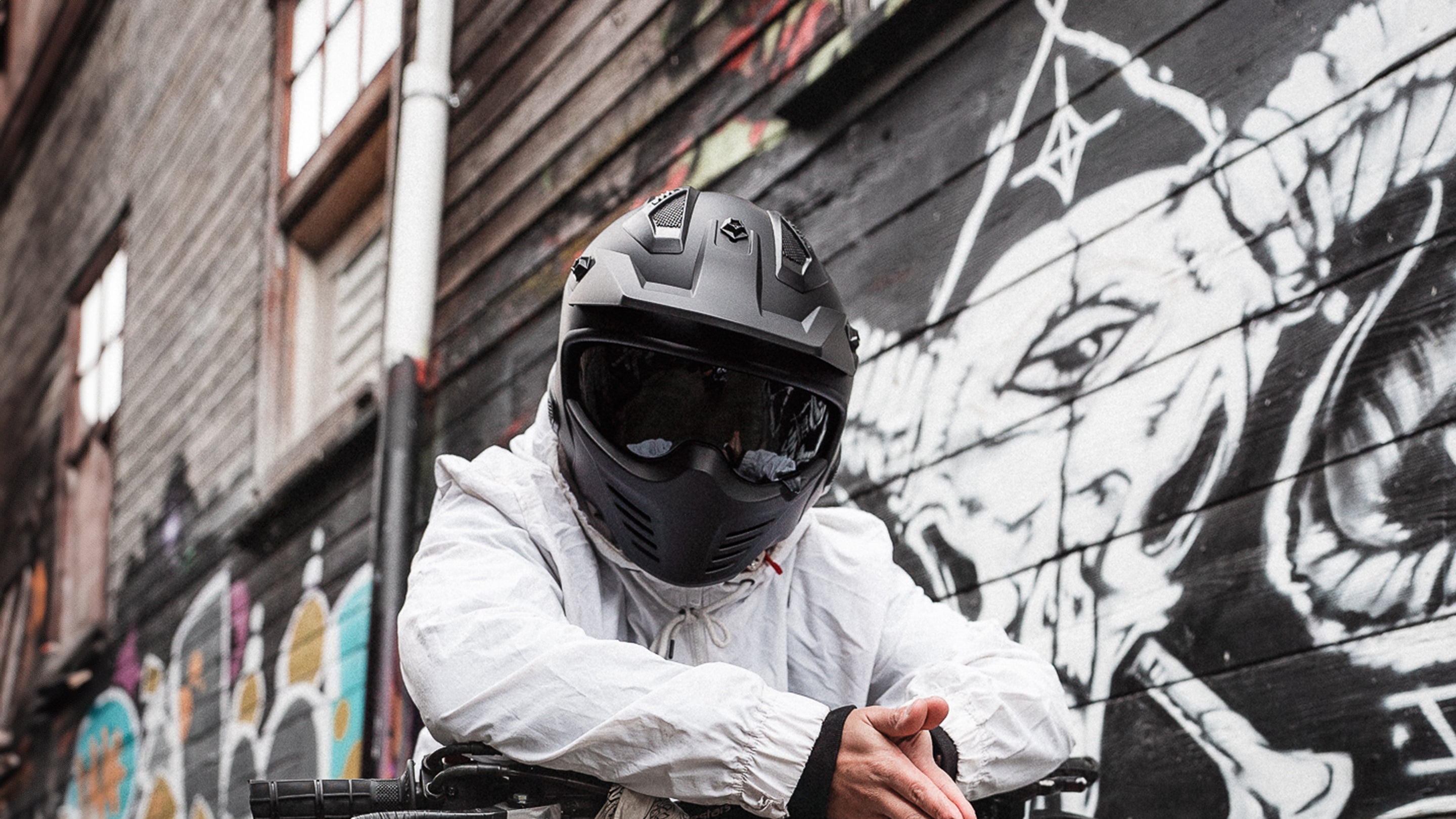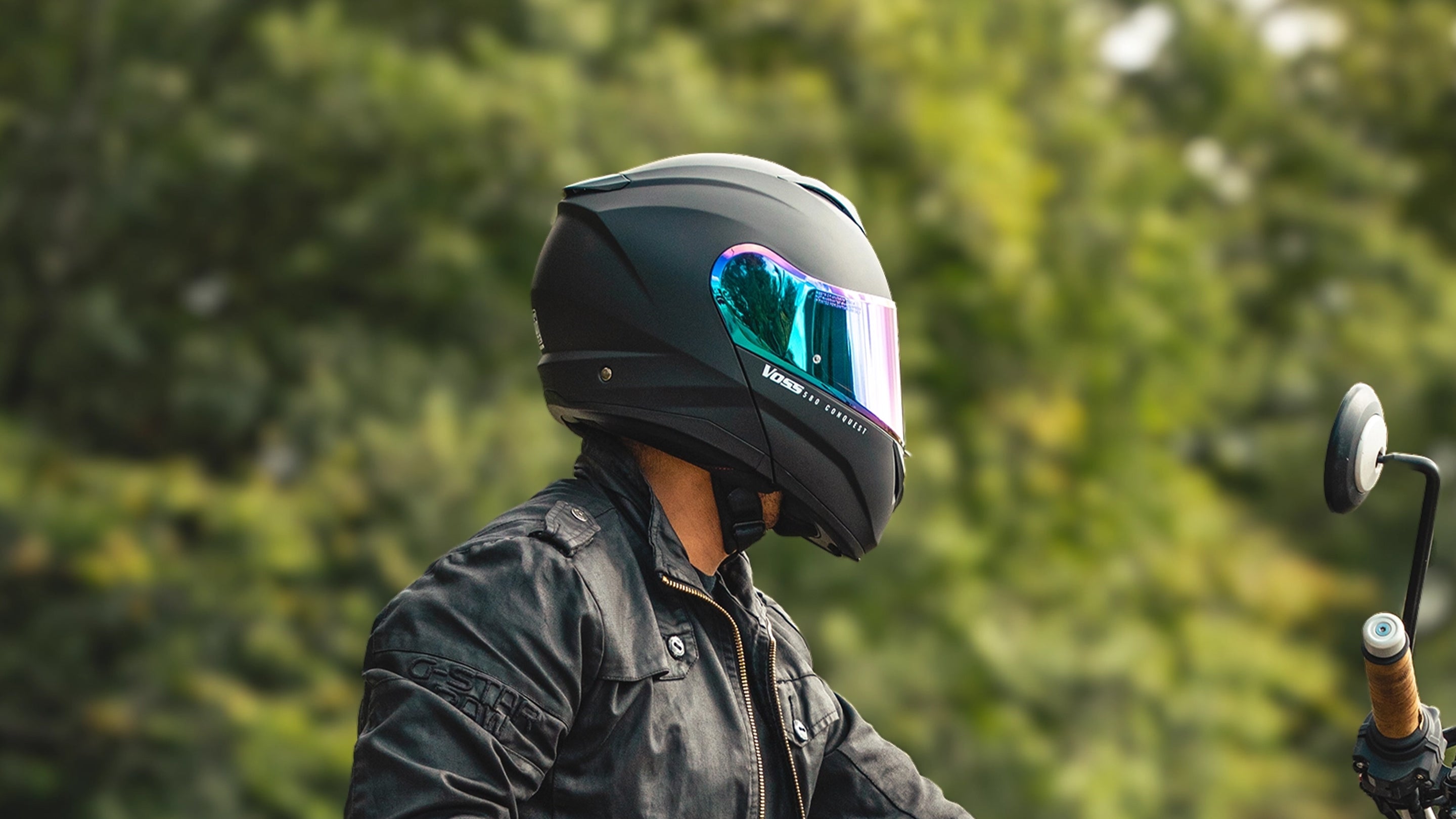The Ultimate Guide to Proper Helmet Sizing for Beginner Riders
When it comes to motorcycle safety, the helmet is arguably the most critical piece of gear. A well-fitted helmet can mean the difference between a minor injury and a fatal accident. Proper helmet sizing ensures maximum protection, comfort, and performance.
Why Helmet Fit Matters
Having the right helmet fit is like having the perfect pair of shoes for a long hike. It keeps you safe and comfortable, allowing you to focus on the ride without constant adjustments or discomfort.
A helmet that's too loose or too tight can lead to significant safety risks and discomfort. Imagine wearing shoes that are too big or too small - not only would they be uncomfortable, but they could also cause injury. The same applies to helmets.
Understanding Head Shapes and Their Impact on Helmet Fit
Motorcycle helmets are generally designed to accommodate three basic head shapes:
- Round: Equal length and width.
- Oval: Longer front-to-back than side-to-side.
- Intermediate Oval: Slightly longer front-to-back, but not as pronounced as the oval shape.
To determine your head shape, take a photo from above or use a mirror. Pay attention to the proportions of your head. Is it more round or oval? This step is crucial for finding a helmet that fits well.
You can use tools like calipers or flexible tape measures to get accurate measurements of the length and width of your head. These measurements will help you match your head shape to the right helmet design.
Measuring Your Head for the Perfect Fit
To measure your head, you'll need:
- A soft measuring tape
- A mirror
- Possibly a friend to help with measurements
Step-by-Step Guide to Measuring Head Circumference
- Position the Tape: Wrap the tape around your head about 1 inch above your eyebrows and ears, ensuring it's level.
- Measure: Note the measurement in centimeters or inches.
- Repeat: Take the measurement a couple of times for accuracy.
Accurate measurements ensure you select the correct helmet size, which is crucial for safety and comfort. Think of it like baking a cake – the right measurements make all the difference!
How Helmet Size Charts Work
Helmet size charts correlate head circumference with helmet sizes (e.g., Small, Medium, Large). These charts provide great insight in finding the right size, however it’s important to note that size charts do not provide any commentary on how head shape might affect the fitment. Read the product descriptions carefully to determine any clues about shape-fit to better determine if the helmet size will be the right choice.
Consider that you’ve determined your head shape to be Intermediate-Oval, but you read in the product description that the helmet you like is Oval-shaped. In this case you may want to size up because the helmet is going to be slightly narrower than your face shape will comfortably allow as an Intermediate-Oval. This can all get a little confusing, so often its best to contact customer service if you are unsure which size to go with if you see some discrepancy between your head shape and the helmet’s head shape.
Use your head measurement to find your size on the manufacturer's chart. Keep in mind that each brand may have slight variations, so always check the specific chart for the brand you're interested in.
Brands often have unique fits even within the same size. It's like how different shoe brands can fit differently even if they're the same size. Trying on helmets is essential to ensure a good fit.
Preparing to Try on Helmets
When you're ready to try on helmets, wear any accessories you plan to use, like glasses, and have a hair tie if needed. This helps ensure the helmet fits well with all your usual gear.
How to Properly Put on a Helmet
- Expand the Straps: Pull the chin straps apart.
- Slide Over Your Head: Place the helmet on your head, sliding it down until it sits comfortably.
Checking for Proper Fit
- Comfort: The helmet should feel snug but not painful.
- Movement: Try moving the helmet. Your skin should move with it.
- Pressure Points: Ensure there are no painful pressure points.
Common Fit Issues and How to Address Them
Too Tight: If the helmet feels too tight, try a larger size or a different brand. Each brand can have a slightly different fit.
Too Loose: If the helmet is too loose, adjust the padding or try a smaller size. You can also look for a helmet with adjustable features.
Pressure Points: If you feel pressure points, experiment with different shapes or brands. A helmet that fits well shouldn't cause any pain.
Adjusting Helmet Fit
Adjust the internal padding or add aftermarket liners to improve the fit. Some helmets come with removable and adjustable padding.
Ensure the chin strap is snug and secure. Adjust the length to avoid discomfort. The strap should be tight enough to stay secure but not so tight that it causes discomfort.
Some brands offer custom fitting services for a personalized fit. If you have a unique head shape or size, this might be a great option for you.
Conclusion
Proper helmet sizing is essential for safety and comfort. By understanding your head shape, measuring accurately, and trying on helmets, you can find the perfect fit. Remember, a well-fitted helmet is like a trusty sidekick on your riding adventures – it keeps you safe and comfortable, allowing you to enjoy the ride to the fullest.










